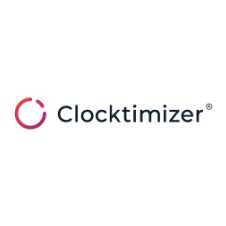Our wrap up of the Clocktimizer and LawVision flash survey webinar
It seems that the famous Chinese curse, “may you live in interesting times”, is upon us. Uncertainty is rife. A global pandemic, and the inevitable ensuing economic downturn is making its mark on the legal world. What will it mean for law firms? And how can they weather the oncoming storm?
In recent weeks, Clocktimizer teamed up with LawVision to look at strategies which do just that. We put together a flash survey, shared on Linkedin, focusing on questions around pricing, profitability and project management. We wanted to see where the opportunities lie to give your firm the edge over the competition. To understand what firms are most worried about, and then offer ways that technology and strategy can avert disaster. We also looked at what firms are focusing on internally to weather this storm.
Yesterday, we were able to reveal those results. Together with Kelly Quigley, the Global LPM Lead for Hogan Lovells, CEO of Clocktimizer, Pieter van der Hoeven and LawVision Principal, Mark Medice, we examined where we are now, where firms can make a win, and strategies for the future. What follows is a roundup of the results, and of the wisdom shared by our panel members.
Economic trends & the background to our survey
“Raising the bar on performance is very likely to be an outcome for firms” Kelly Quigley
Before diving into the results of our survey, our panel members took a moment to discuss some of the emerging trends the crisis has thrown into focus. Mark kicked off by polling the 70 attendees about their sentiment for economic performance in 2020. Unsurprisingly, 73% were slightly pessimistic, but a further 22% were cautiously optimistic. This is a strong sign of the belief among legal professionals that law firms can weather such storms. With the 2008 crisis being a fine example.
However, it is important to note that the events during the 2008 crisis are likely to be a good litmus test for the coming years. As Pieter noted, Clocktimizer was formed out of the last recession. The push towards increasing risk sharing agreements led to a need for more transparency and the tools that can deliver that in a low impact way to clients. However, he also noted that recent years have seen a return to a more traditional risk sharing model. Currently AFAs are “not pushed for enough by clients, and not actively offered enough by firms. The silver lining to current events could be the push towards much needed efficiency and improvement measures in firms”.
Kelly also shared the impact of the current economic climate on clients. “Clients are no longer manufacturing the same things, or performing the same services and we need to adjust to that change.” In line with this Kelly believes that data reporting, providing the basis and justification for working with a firm, will be increasingly important. Firms must be able to justify choosing their services over a (potentially cheaper) competitor. For that you need analytics and predictive analysis.
Finally, Mark explored one of the greatest trends threatening the legal industry. Discounts. Discounts currently account for USD 25 billion in lost revenue to the legal industry each year. As Mark noted, “we’re not a stock market. What are our discount patterns? Where is the breakdown of the loss of value in the lifecycle of a matter?”
It is a challenge known all too well by Kelly. “Pricing and LPM need to work hand in hand. How many of us are frustrated because we find out about a double discount or a write off later on? Project management isn’t aware of excess discounting and we can’t therefore prevent it from being a triple discount by default.” Clearly, understanding how, and why we offer discounts is a singular challenge to the legal industry. By using data to inform and communicate this information, it can be avoided more readily in the future.
Flash survey results
“Planning doesn’t go away in times of stress. It becomes more important” Mark Medice
One of the first questions we explored in the flash survey was the priorities each firm had during the crisis. Firms shared eight key areas of focus with us:
Remaining present minded on pandemic and its effects
Intense activity on matter monitoring and pricing
Cash management and leakage top of mind
Data driven budgeting projects coming into greater focus
Pricing/LPM education is a common thread
Strong client focus
Profitability is very important
Advanced analytics are still early but emerging
Pieter and Kelly noted that some of the priorities could naturally lead into others. Most notably, profitability is an inevitable successor to a focus on pricing and LPM and increasing the use of data driven budgets. Both also noted that the most important focus for all firms in the coming years must be their clients. At Clocktimizer, Pieter shared his strong customer focus, as their continued loyalty will be the single biggest factor in weathering the coming years.
Kelly followed on this sentiment, sharing the importance of data in working with clients. “I teach my team to provide at a glance data. Clients don’t need all the data, they need someone to interpret and analyse it and show them what matters. We often use the beautiful Clocktimizer donuts to help us tell a story in a few seconds rather than writing out a whole paragraph.” All the panelists emphasised the need for transparency to win over clients in times of upheaval.
Where firms can make easy wins
“What is everyone else not doing? This is where you can make an easy win for your firm right now” Pieter van der Hoeven
Key among the findings of our survey was our dive into where firms were failing, and where they were succeeding. As the panelists discussed, this information can guide firms in adding value where their competitors are unable to compete.
Pieter pulled the survey data to break down into areas well covered by firms, and areas which are underserved. “I was surprised that finding expertise (a core business of a law firm) is not something many firms currently have as a capability.” Kelly also noted that detecting out of scope work is clearly an issue among many firms. At one point in time, it was even a challenge for Hogan Lovells. Recently they have been able to use Clocktimizer technology to retroactively identify out of scope work in a huge matter and take this to the client. Firms which are able to leverage this sort of information will have the edge over their competitors.
Mark opened up a secondary area where firms could stand to distance themselves from the field. “Last year you would say that the gains being made by firms were often through a balancing of values and risk. Firms must ask themselves if their process is resilient enough to withstand a return to value?” Our survey revealed that 15% of firms still have no roadmap for pricing and profitability. A further 50% are still working on them. With a move towards a more value based proposition for clients, firms with this built into their pricing roadmap are more likely to see success in the coming years.
What changes do we foresee?
Each of our panelists closed off by looking at some of the changes they expect to see in the future. Mark kicked us off by predicting a move to more active matter management. Many firms are beginning to build out these processes, but they are still not industry standard at present. Mark also shared a belief that we need to break down our pricing and LPM silos. Without an opening up of the data, both internally in firms, and between them, the industry will not have sufficient data to draw on to make real change. This breaking of the siloes will also offer the opportunity to connect with clients better.
Pieter once again discussed the importance of the client at the center of all strategy. As he noted “We all have one or two matters we wish we had good data on, to provide that transparency to an important client. If you have those matters, then let Mark or I know and we can work together to analyse them. To enable you to collaborate with your clients”.
To this end, we will wrap up with an anecdote shared by Kelly, which illustrated all of our panelists points. “Very recently we were drafted in to work on a matter with a partner, who had created a fee quote out of thin air. In the second round (and upon closer inspection) it ended up costing five times more than anticipated. Understandably, the client was extremely unhappy when we quoted the new price. However, by using Clocktimizer to show the blended rate, the leverage and the work that was done, we were able to bring the client around. In the end the price increased 366% and the client accepted this because of how Clocktimizer visualised it and how we shared that information. The moral of the story is this: Use technology wisely.”
We want to share a huge thanks to all of our panelists for taking part in this webinar. We also want to thank everyone who filled out our survey and participated in the webinar itself. We hope that the insights shared will help your firm tackle the coming years.



